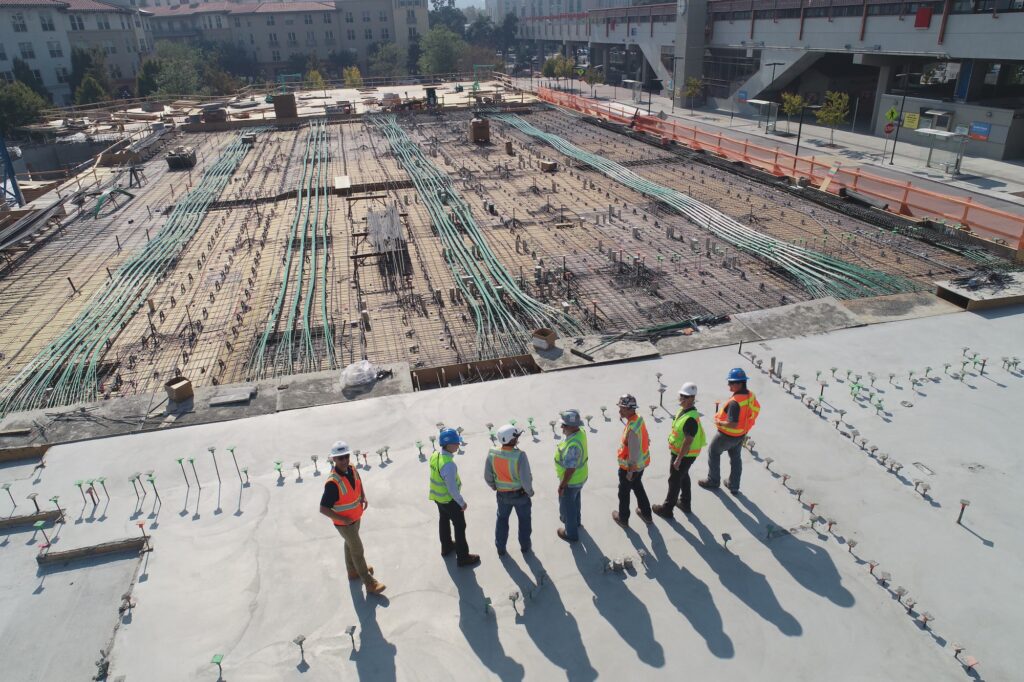Having different head protection standards in different regions of the world has led to confusion in the marketplace over what type of helmet or hard hat companies should buy for their employees and what users should expect.
Some companies are using a mix of American and European standards for their head protection specifications, which is a dangerous practice because Europe and the U.S. have fundamentally different approaches to safety standards for these products. European head protection standards (including the standard for recreational helmets, EN12492, and its industrial-protection cousin, EN 397) include some design requirements, while the American standard (ANSI/ISEA Z89.1) focuses on performance requirements.
“People don’t really realize what they’re wearing, and that’s evident day in and day out,” said Stacey Simmons, National Sales Manager – Americas at Bullard, and chair of the International Safety Equipment Association (ISEA) Head Protection Product Group. “It creates a lot of confusion in the marketplace whenever you start intermingling the standards, and that’s happening quite a bit.”
ISEA’s Head Protection Product Group is revising ANSI/ISEA Z89.1 to not only update it, since its last revision was in 2019, but also to resolve market confusion created by different global standards — and create a U.S. standard for safety helmets.
U.S. head protection standards are largely agnostic about materials or specific design elements as long as the helmet performs to the standard. “In some of the standards around the world, including the European standards, they typically have some type of design criteria in them,” said Simmons.
“With the revision of Z89.1, what we’re trying to do is look at what the market is using, what they’re already writing into their own specs, what they’re pulling from different standards to meet their internal needs,” Simmons added. “And then we’re trying to make the revised standard as cohesive as possible and as clear as possible to try to resolve users’ confusion over what they’re actually buying.”
Some companies are using a mix of American and European standards for their head protection specifications, which is a dangerous practice because Europe and the U.S. have fundamentally different approaches to safety standards for these products.
European Recreational Helmets Entered the Workplace
Some of the confusion can be traced back to Europe, explained Keith Fecteau, Global R&D Director, Fall, Head, Eye, Face, Body Protection & 3M Scotchlite™ Reflective Materials, and vice chair of ISEA’s Head Protection Product Group.
“Back around 2015, we saw an emerging trend where workers, especially in forestry and utilities segments, who were doing a lot of climbing and working at heights, started buying their own safety helmets,” said Fecteau.
Those helmets did provide users some benefits, Fecteau noted: They had chin straps, and they came without a brim so there was no view obstruction when the user was looking up while climbing or working. These helmets typically met a European standard — but for recreational mountaineering helmets, EN12492.
“What then started to happen, was the companies they were working for recognized that crews were using these recreational helmets and said, ‘Hey, wait a minute, those helmets don’t meet EN397’, which is the European industrial helmet standard,” said Fecteau.
We should note an important terminology difference here. What Americans call a “hard hat” is typically called a “helmet” by Europeans. “Helmet” is the blanket term there for head protection, whereas Americans differentiate between hard hats and helmets.
In any event, said Fecteau, when companies realized their employees were wearing head protection that met only the recreational mountaineering standard, they didn’t make an issue out of it. Most of the companies were simply happy their workers were wearing some form of head protection.
Eventually, observed Fecteau, European recreational helmet manufacturers saw an opportunity to get their helmets certified to the EN397 standard, which is similar to the Type 1 requirements of the ANSI standard in the U.S. Then they certified the same helmets to the U.S. ANSI/ISEA Z89.1 Type 1 standard and began selling into the U.S. market.
We should note an important terminology difference here. What Americans call a “hard hat” is typically called a “helmet” by Europeans. “Helmet” is the blanket term there for head protection, whereas Americans differentiate between hard hats and helmets.
New Helmet Style, New Confusion
That’s when a lot of confusion spread in the U.S. market, said Simmons.
“We saw recreational companies coming over with a new style helmet, a nontraditional look [compared to the familiar American hard hat] that had more of the European look, and really just started to increase the market,” she said. “Today, ‘safety helmet’ is becoming the term that the industry recognizes.”
American safety professionals, especially in construction, started to view these European-style EN12492-compliant helmets as more protective for their workers compared to traditional hard hats, said Fecteau — even though they had come from recreational rather than industrial use — and use of the European products started to expand throughout the U.S.
The problem, noted Simmons, came when American employers started taking parts of the European standard and parts of the ANSI standard and combining them into their own head protection specifications for employees.
The reason doing that is dangerous, she explained, is the European standards work differently from American standards. It’s a classic apples-to-oranges problem.
“The way European standards work, you have to certify a system,” she said. “You have to meet specific design requirements that are spelled out in, say, EN12492. So, a helmet might be designed in a way that actually conflicts with ANSI/ISEA Z89.1.”
Simmons offered an example: “I had one construction company call me for a dielectric Class “E”-rated helmet that they also needed certified to EN12492,” she said. “Well, you can’t have that, because the second clause in the EN12492 design criteria says a helmet must be vented, but a vented helmet could conduct electricity, which means it wouldn’t meet the ANSI/ISEA Z89.1 Class E performance standard.”
In other words, added Fecteau, the European and American standards contradict one another in some respects. The U.S. looks at the end performance result versus how a manufacturer achieves that end result.
Simmons noted that other nations around the world beyond Europe likewise tend to use design standards.
“There are a lot of standards around the world [for] head protection,” she said. “Mexico, for example, has its own standard. They look at other things outside of performance, such as the webbing on the helmet’s suspension has to be 19 millimeters. That’s a design criterion.”
Revised Z89.1 Standard Will Be More Robust
The ISEA committee’s work will continue that focus on performance rather than design criteria, agreed Simmons and Fecteau.
That leaves a lot of latitude for manufacturers in how they create head protection products that perform to ANSI/ISEA Z89.1. “We’re not expecting to put anything in there that’s unrealistic to achieve with current materials,” said Fecteau.
And innovation is ongoing in the safety equipment industry. “Manufacturers are always going to be looking at the material science and how to improve performance,” said Simmons.
One important point buyers and users should know: Head protection that meets the ANSI/ISEA Z89.1 standard also complies with Occupational Safety and Health Administration (OSHA) regulations. If a safety helmet meets Z89.1, it will be marked as such. If a helmet is marked as meeting Z89.1, it meets the OSHA requirements.
The revision process is built around achieving consensus, so it involves numerous review cycles. ISEA anticipates a release date for the new standard sometime in 2024.
One of the big questions Simmons said she constantly gets asked: Will Type I or Type II be going away? The short answer, she said, is no.
“I think we’re going to end up with a little bit more robust standard,” she predicted. “We are looking at making some changes, and we are currently at a point where we’re evaluating exactly what those changes will be and where in the standard they should be added.”
ISEA started the revision process in 2022 by surveying numerous stakeholder groups. VPPPA was one of the groups surveyed. If any VPPPA members would like to be a consensus reviewer as the standard gets closer to a final draft, please email ISEA at standards@safetyequipment.org.
Meanwhile, employers and users who have a question about how existing standards affect the type of head protection they should be using are encouraged to consult with their current provider or manufacturer, or contact ISEA.


